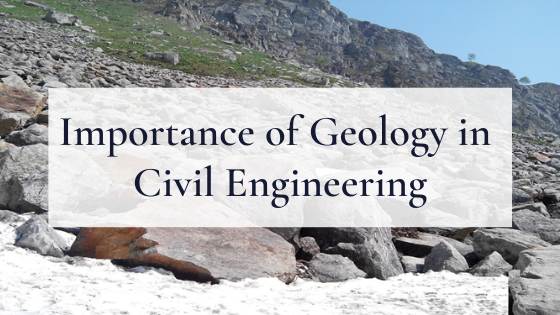The smart Trick of Geotechnical Engineering For Construction Projects That Nobody is Talking About
Table of ContentsAll about Geotechnical Engineering For Construction ProjectsThe Best Strategy To Use For Geotechnical Engineering For Construction ProjectsThe Definitive Guide for Geotechnical Engineering For Construction ProjectsThe Best Strategy To Use For Geotechnical Engineering For Construction Projects4 Simple Techniques For Geotechnical Engineering For Construction ProjectsNot known Incorrect Statements About Geotechnical Engineering For Construction Projects
The role of geotechnical design significantly deals with recognizing the attributes of soil and rock, which may vary significantly by their density, wetness material etc. These functions have to be analyzed by geotechnical engineers to forecast their motions under various scenarios. The safety and security along with stability of structures are affected by dirt conditions, making this evaluation essential.A geotechnical designer will certainly take a look at dirt to figure out the bearing capability of the planet and recommend correct structure kinds, such as shallow structures, deep structures like stacks, or specialized solutions like drifting foundations for soft soils. Recognizing the attributes and actions of soil and rock, along with exactly how they connect with building and constructions that have been put up on or within them, is among the primary descriptions for why geotechnical engineering is very important.
Environmental security is completed via geotechnical design. Knowledge in air, water, and dirt top quality maintenance is placed to make use of by geotechnical engineers to minimize the negative effects of tasks.
Facilities advancement, offshore engineering, passage construction, and deep foundations. Risk-based layout and multidisciplinary teams. These components will keep the field evolving and guarantee its continued significance in the years ahead. To sum up, geotechnical design is a vital technique that maintains the durability and integrity of civil infrastructure. Geotechnical engineers contribute to making structure projects effective all over the world by comprehending the practices of earth materials and using appropriate preparation approaches.
Geotechnical Engineering For Construction Projects - Questions
The foundational stability of any type of task is imperative. Geotechnical design plays a vital function in guaranteeing that structures are improved strong ground, literally and figuratively. By examining soil, rock, and subsurface conditions, geotechnical engineers provide important understandings that aid in the style, construction, and upkeep of buildings and infrastructure.

Geotechnical Engineering For Construction Projects for Beginners
Lab screening: Identifying the residential properties of soil and rock. Numerous prominent construction tasks have effectively used geotechnical design to ensure their stability and safety and security.

As a leader in geotechnical engineering, BECC Inc. is dedicated to providing ingenious and efficient solutions that satisfy the greatest requirements of quality and safety and security., a mechanical engineer and rock hound.
Top Guidelines Of Geotechnical Engineering For Construction Projects
Terzaghi additionally established the framework for concepts of bearing capacity of structures, and the theory for forecast of the rate of negotiation of clay layers due to combination. Later on, Maurice Biot fully established the three-dimensional dirt debt consolidation concept, extending the one-dimensional version formerly established by Terzaghi to more basic hypotheses and introducing the collection of standard equations of Poroelasticity.
Geotechnical engineers check out and establish the buildings of subsurface problems and materials.
Little Known Facts About Geotechnical Engineering For Construction Projects.
Geologic mapping and interpretation of geomorphology are typically finished in appointment with a rock hound or design rock hound. Subsurface expedition normally involves in-situ testing (for instance, the standard infiltration test and cone infiltration examination). The excavating of examination pits and trenching (particularly for situating faults and slide planes) may also be used to learn more about soil conditions at depth. , which uses a thick-walled split spoon sampler, is the most important link typical method to collect disrupted examples.

Commonly, the user interface's specific geometry is unidentified, and a streamlined interface geometry is assumed. Finite inclines call for three-dimensional versions to be analyzed, so most inclines are examined presuming that they are Continue infinitely large and can be stood for by two-dimensional models.
The Ultimate Guide To Geotechnical Engineering For Construction Projects
Developing the design based on a functioning theory of behavior expected under the most potential problems. Choice of amounts to be observed as building and construction proceeds and determining their prepared for worths based on the functioning hypothesis under the most undesirable conditions.
Measurement of quantities and examination of actual conditions. It is inappropriate for projects whose design can not be changed throughout building and construction.